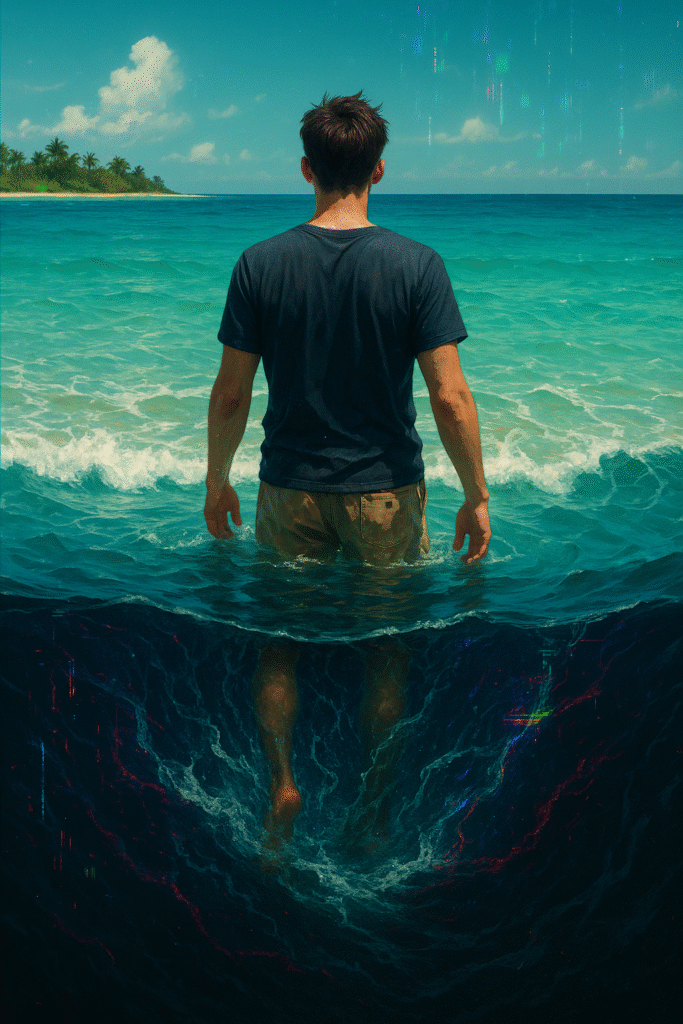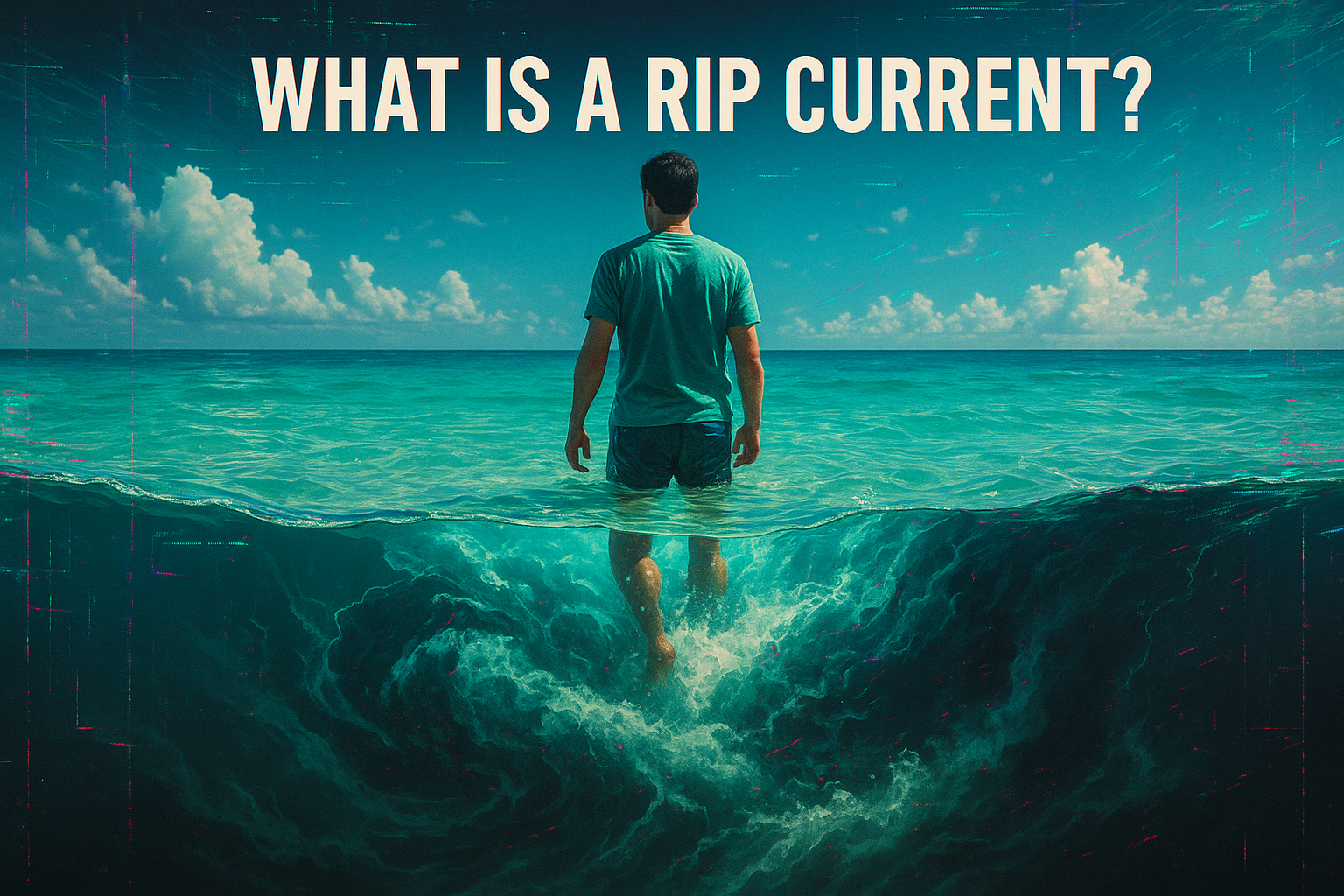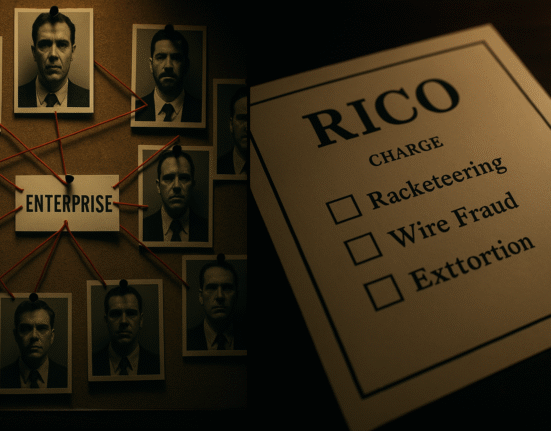You’re standing in the ocean. Waist-deep. Everything looks calm. Then, your feet start sliding. Backward. Fast. Before you can react—you’re 100 feet out. That’s not a wave. That’s a rip current. And it kills hundreds every year, fast. Malcolm-Jamal Warner just died this way in Costa Rica. But almost no one talks about how.
Let’s explain the trap that looks like a vacation photo.
🌊 What Even Is a Rip Current?

It’s not a riptide. Not a wave. Not a hole in the ocean.
It’s a fast-moving, narrow stream of water that pulls you away from shore.
Think of it like an invisible treadmill going the wrong way. It forms when waves pile water near the shore, and that water needs to escape somehow. It escapes through a narrow, deep channel.
| What you expect | What you get |
|---|---|
| Gentle beach water | A 4 mph reverse river |
| Waves that knock you down | Calm surface that drags you backwards |
Some rip currents move faster than Olympic swimmers.
Source: NOAA, National Weather Service
💥 Why It Kills Even Good Swimmers
Most people try to swim back to shore.
That’s the mistake.
Rip currents don’t pull you under. They pull you out.
You panic. You fight. You burn out. You drown.
The only survival move? Swim parallel to the shore until you’re out of the current. Then you swim back.
But in the moment, nobody thinks that.
Even lifeguards have died this way.
Source: U.S. Lifesaving Association, Mayo Clinic
🏝️ Malcolm-Jamal Warner’s Case
On July 17, 2025, Malcolm-Jamal Warner drowned while swimming at Playa Cocles in Costa Rica.
Local authorities confirmed: rip current. He was pulled under and died of asphyxia by drowning. He was 54.
Playa Cocles is known for its beauty. And its deadly pull. It’s claimed multiple tourists over the years.
Source: AP News, ABC News, People.com
🌴 Why Tourist Beaches Are Even Riskier
- Clear water = you don’t see the current
- No lifeguards in many foreign spots
- Tourists underestimate tropical ocean speed
Costa Rica, Hawaii, Florida — all rip current hotspots.
In 2022 alone, over 100 people drowned due to rip currents in the U.S. alone.
Your dream swim could turn into a headline before you blink.
🤔 How to Spot One (It’s Not Easy)
- Look for a gap between breaking waves
- Water may look darker, foamless, or weirdly calm
- Avoid isolated, deep channels
But even pros struggle to spot them. That’s what makes them terrifying.
🚫 What NOT To Do
- Don’t fight it
- Don’t swim straight back
- Don’t assume calm water = safe
DO THIS INSTEAD:
- Float. Don’t panic.
- Swim sideways (parallel to shore)
- Once out, swim back diagonally
This info should be on every beach sign. But it’s not.
🔍 Final Bruh WTF Take
Malcolm-Jamal Warner didn’t drown in a storm. He drowned in paradise.
Rip currents are one of the most misunderstood killers in nature.
They don’t crash, roar, or foam. They just quietly erase you.










Leave feedback about this